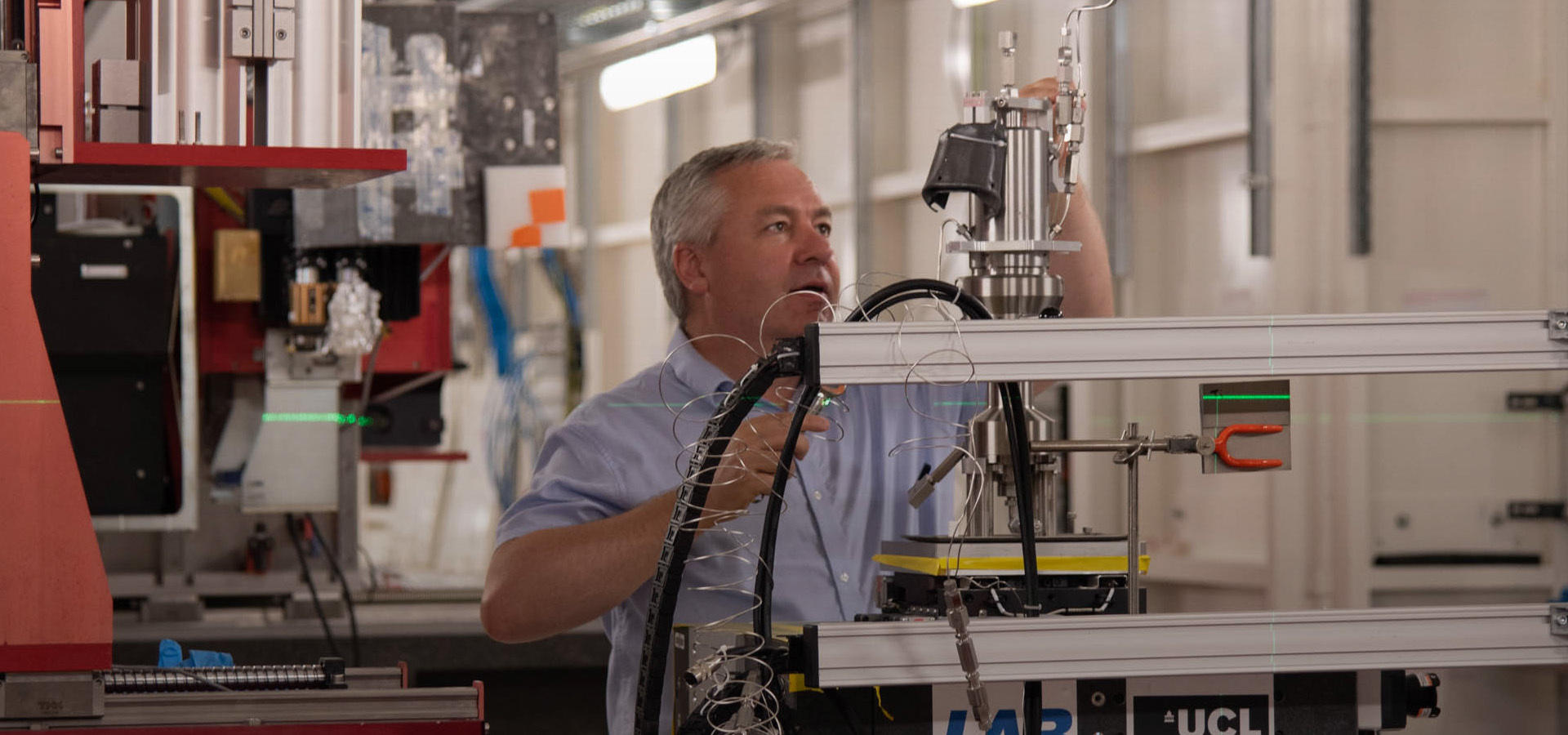What happens to the rocks just before an earthquake starts? Today, the time and location of earthquakes is impossible to predict with accuracy, and questions remain about their development.
With the ERC "Break-Through Rocks", my collaborators and myself want to reproduce the real life conditions of earthquakes, at depths up to 10 km underground, and to discover how cracks in rocks develop and merge at the onset and during an earthquake.
I am a geoscience professor at the University of Oslo and at the University Grenoble Alpes. I am currently director of the Njord Centre in Oslo, where physicists and geologists work alongside each other to get insights on the dynamics of our planet.
I have been coming to the ESRF for the last 30 years. In my first time at the ESRF I was a master student and we visited the construction site. Later, in 2004, I carried out the first in situ rock physics experiment at the ESRF, where we deformed a granular material using X-ray tomography on beamline ID19.
Throughout time, my experiments have evolved a lot: we went from static imaging to time-lapse imaging, i.e. seeing the same object at different stages, and now we are aiming to track what happens to rocks in real life conditions inside the Earth.
The new BM18 beamline represents a huge improvement in the capabilities of the ESRF for my research. Thanks to the new sample stage, we will be able to study bigger samples. With my ERC group, we have built an apparatus that allows us to reproduce the depths of 10km underground and this will be set up on the beamline soon. This apparatus will allow performing experiments both in compression and in torsion, and will host new acoustic sensors, while imaging deformation in situ. I also conduct experiments on beamlines ID11 and ID19 that have unique capabilities to unravel the mechanisms of deformation of rocks.
Due to the growing complexity of my experiments, I now require 3 to 6 months of preparation time. To ensure the success of these experimental sessions, a part of my ERC team is stationed at the ESRF, where scientists build and operate rock deformation apparatuses, conduct feasibility tests, and perform experiments. Their contribution is vital to the overall success of the experiments.
In terms of synchrotron sources, the ESRF provides world-leading facilities for my research. I attribute this to two factors: the advanced capabilities of the new EBS and my strong working relationship with the ESRF scientists. We have established a collaborative approach to experimentation, where I share my goals and they work alongside me to determine the best course of action for success.

